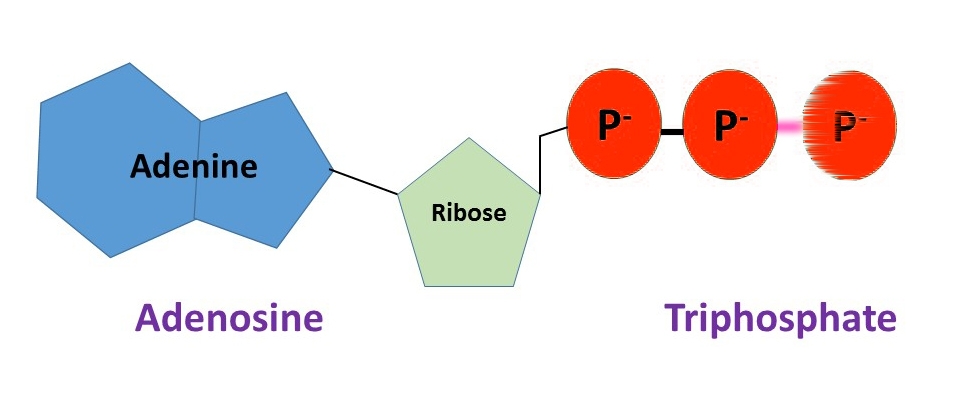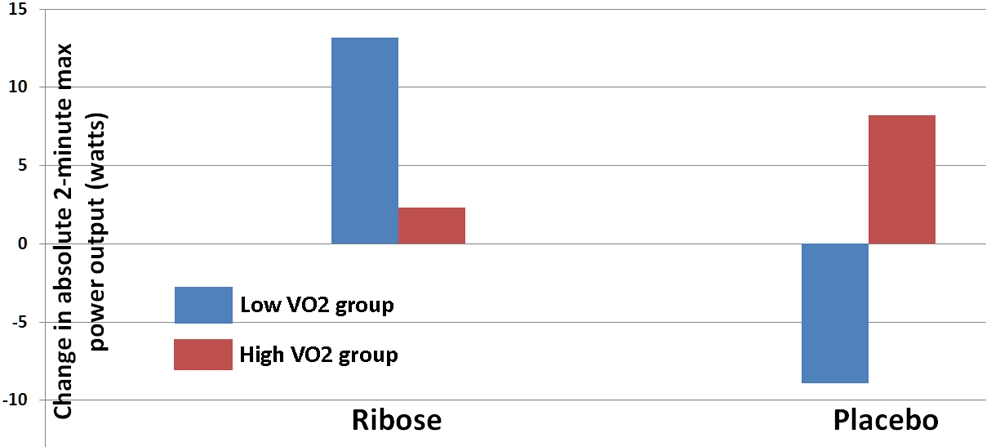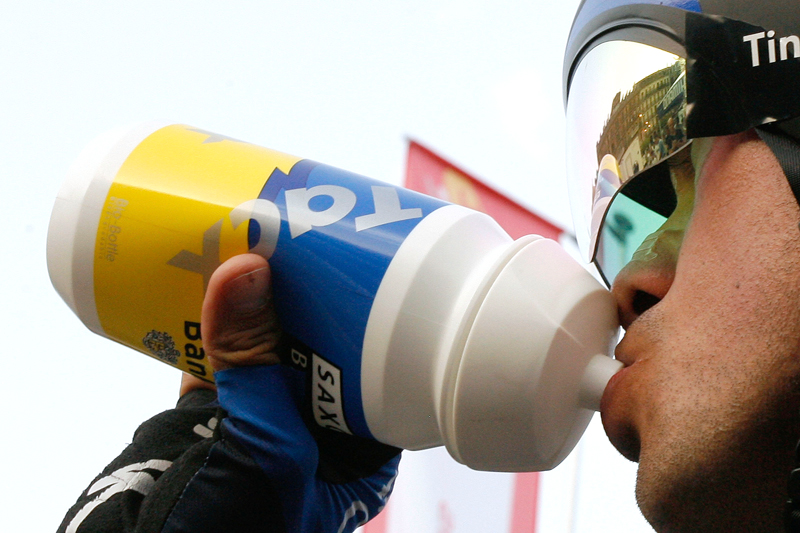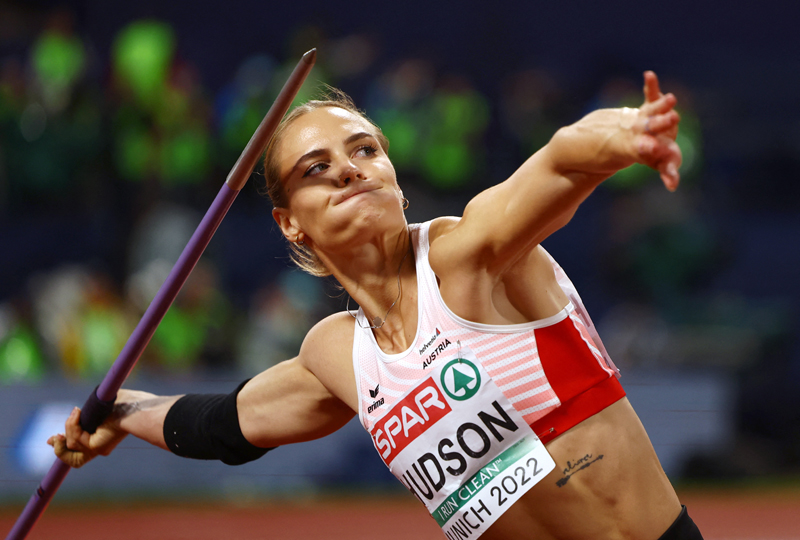Ribose supplementation: sweet news for athletes?

Can ribose supplementation enhance athletic performance? SPB looks at the evidence
Punch ‘ribose’ and ‘athlete’ into any internet search engine and you’ll marvel at the number of companies that now promote supplemental ribose as an ergogenic aid. Given that ribose forms part of the adenosine triphosphate (ATP) molecule and that ATP, the universal currency of energy in the body, is what makes our muscles work, the claims that ribose supplementation can deliver more power and energy and faster recovery seem pretty plausible, especially when they’re apparently supported by numerous scientific references. Dig a little deeper however, and it soon becomes evident that all is not as straightforward as it seems in the ribose garden.What is ribose and why is it important?
Like most naturally occurring compounds ending in ‘ose’, ribose is a sugar; and like many of the more familiar sugars in the body and in the foods we eat, such as glucose and fructose, it consists of a carbon ring-like structure to which oxygen and hydrogen atoms are bonded. However, unlike these other sugars, ribose is actually synthesised in the body from glucose. Also different is that ribose is a five-carbon sugar – unlike most sugars, which contain a 6-carbon ring structure.As a rule of thumb, your body will never synthesize something it doesn’t need, and the same is true for ribose. The ribose sugar unit is an important building block in the body – for example in the construction of DNA and RNA, which store and translate genetic information during cell division. Another crucial role of ribose – and the one we’re interested in - is as a component of the molecule adenosine triphosphate (ATP), whose job is to act as the universal energy currency within the body – eg when energy is liberated in muscles during exercise.
Ribose and ATP
Although ribose forms an integral part of the ATP molecule, it is important to understand that it is the phosphate groups of ATP that store and donate energy to working muscles; in particular, it is the bond between the end and middle phosphate that breaks to release energy, when ATP is broken down to ADP (adenosine diphosphate) and phosphate. The other end of the molecule (the adenosine part) consists of two building blocks joined together (adenine and ribose) and serves merely as an inert framework upon which the ‘action’ part of molecule is hung (see figure 1, below)!Figure 1: Structure of the ATP energy molecule

The sugar ribose forms part of the framework (along with adenosine) upon which the ‘action’ section of the molecule (three phosphate groups – P- ) is hung. ATP releases immediately usable energy when the very energetic bond between the two end phosphate groups (shown in pink) is broken – ie ATP breaks down to form ADP.
When we speak of ‘breaking down’ ATP to release energy, we are referring only to the breaking of the end phosphate-phosphate bond, since the rest of the molecule stays perfectly intact. Taking extra ribose, therefore, cannot be expected to increase the rate at which broken down ATP is resynthesized from ADP and phosphate (unlike creatine). Instead, the theory (or claim) is that ribose helps the body to manufacture more adenosine frameworks - ie to actually increase the number of ATP molecules - or to slow down any decrease in ATP concentration that might occur under very strenuous training conditions, when small amounts of ATP can be completely destroyed (rather than just broken down to ADP and phosphate).
Ribose vs. creatine
There is no disputing the ergogenic potential of supplemental creatine. By boosting levels of muscle creatine, athletes can increase their stores of a substance called phosphocreatine, which acts as an emergency high-energy reservoir of phosphate. This phosphate pool is able to rapidly donate a high energy phosphate group to ‘spent’ ATP (known as ADP), thereby regenerating ATP in muscles when it is being used up more rapidly than it can be regenerated via the ‘normal’ aerobic pathway. The net effect of creatine is to help athletes to sustain high-intensity bursts for longer, while speeding recovery between bursts.Given that ribose forms an integral part of the structure of ATP, it was only a matter of time before scientists began to consider whether supplementary ribose would translate into an increased rate of ATP synthesis from its constituent building blocks, leading to higher muscle concentrations of ATP and thence to improved athletic performance.
Scientific interest in the potential benefits of ribose supplementation escalated rapidly after a number of studies carried out in the early 1990s indicated that supplementary ribose improved cardiac energy metabolism in patients with chronic heart disease, thereby significantly improving their quality of life(1,2,3).
However, when researchers studied the effects of ribose supplementation on other conditions involving disorders of energy metabolism, the results were less impressive. These conditions included Duchenne dystrophy(4), a progressive disease causing generalised weakness and muscle wasting, and McArdle’s disease(5), where the ability to break down stored muscle glycogen to glucose, so generating ATP, is severely impaired.
Nevertheless, reports of the benefits of supplementary ribose for patients with chronic heart disease continued to accrue, and a 2003 randomized double-blind crossover study (considered to be the most rigorous type of clinical trial) found that supplementing ribose in patients with congestive heart failure for three weeks significantly improved heart function and work output during a sub-maximal cycling test(6). Moreover, the patients in question also demonstrated improved ‘quality of life’ scores.
Ribose in athletes- the evidence
Studies on heart patients are well and good, but what does ribose have to offer those with normal cardiac function and, more particularly, what can it do for athletes? Unfortunately, there has been very little evidence over the past two decades to support these claims. One study examined the effects of ribose supplementation on a one-week period of intense intermittent exercise(7). In a randomized double-blind crossover experiment, eight athletes performed cycle training, comprising 15 sets of 10-second all-out sprinting, twice daily for seven days. At the end of the study period, the subjects took either ribose (200mgs per kilo of body weight) or a placebo three times a day for three days, after which an exercise test was carried out, and muscle ATP measured. After a washout period, the groups changed places and the experiment was repeated.The results showed that three days after the training period those taking ribose had regenerated their ATP to pre-training levels, while those taking placebo did not recover their ATP quite as rapidly. However, mean and peak power outputs observed in the post-training exercise test did not differ between the groups; in other words, the slower ATP regeneration seen in the placebo group made no difference to their actual performance.

In another clinical trial carried out the same year, 19 trained men were initially tested for their anaerobic power by performing two 30-second sprint tests on a cycle ergometer separated by three minutes of rest(8). At the end of these practice sessions, blood samples were taken, and subjects were then matched for body mass and anaerobic capacity and assigned to ingest capsules containing either a dextrose placebo or ribose twice daily for five days, repeating the same tests on the 6th day.
Although there was some evidence that total work performed in the second post-supplementation sprint was lower in the placebo group than the ribose group, further analysis showed that there were no significant differences in peak power, average power, torque, fatigue index, blood lactate or other blood metabolites between the groups. The researchers concluded that that oral ribose supplementation did not increase anaerobic exercise capacity or affect any of the measured metabolic markers.
Another study appeared to provide some weak evidence that ribose can enhance sprinting performance(9). In this randomized, controlled, double-blind clinical trial, subjects were asked to perform two bouts of repeated cycle sprint exercise in a single day, each bout consisting of six 10-second sprints, separated by 60-second rest periods. After the second bout, the subjects ingested either 32g of ribose or cellulose (an inert placebo) over the next 36 hours, then returned to the lab to repeat the sprinting test. After a five-day washout period, the groups changed places and the whole procedure was repeated.
The results showed a statistically significant increase in mean and peak power in sprint #2 and higher absolute values (although too small to be statistically significant) in sprints #1, #3 and #4. The researchers concluded that, because supplementation did not show reproducible increases in performance across all six sprints, ribose did not have a consistent or substantial effect on anaerobic cycle sprinting. In another study, muscle power output was measured during dynamic knee extensions on an isokinetic dynamometer before and after a six-day training period, during which subjects were supplemented with either ribose (16g per day divided into four doses) or placebo(10). At the end of the test, knee extension power outputs were approximately 10% higher in both groups, but there were no differences between the groups. Neither were there any differences between the group in blood lactate and plasma ammonia concentrations.
Is ribose supplementation pointless?
While there are plenty of anecdotal and testimonial-type claims for the efficacy of ribose to be found in terms of exercise performance, if you take a long hard look at rigorous placebo-controlled peer-reviewed scientific trials from the 2000s, the evidence is at best very weak. This was eloquently summed up in a 2007 review study (a study that pools all the data from previous studies) where the authors concluded: “Data have shown promise that ribose supplementation leads to enhanced restoration of ATP levels following exercise, but this has seldom translated into increased athletic performance.”(11). Yes, it’s true that ribose is a building block of the molecular structure of ATP, but claiming that consuming extra ribose will therefore boost ATP production and energy is as logically naïve as saying that a car engine that needs four quarts of oil for smooth operation will run twice as smoothly with eight quarts!It is true that with certain heart conditions, supplemental ribose can help cardiac energy metabolism. However, this is almost certainly because, in these rare circumstances, there is abnormal destruction and loss of ATP, and the heart's ability to re-synthesize ATP becomes limited by the supply of ribose available. In athletes however, even if extra ribose can help to regenerate any degraded ATP more rapidly (as suggested in one of the above-mentioned studies) or even increase the number of ATP molecules, this may still make no difference to energy reserves. This is because when ATP releases its energy in the muscles, it can be very rapidly regenerated again from ADP and phosphate.
This energy-releasing process is completely reversible (unlike the complete destruction of the ATP molecule); although the average human can store only about 3oz of ATP in total, during intense exercise as much as 15kg of ATP is broken down and reformed per hour. To put it another way, a typical ATP molecule in the active exercising muscles will be cycled back and forth between ATP, ADP and phosphate hundreds of times a minute! So what really matters in terms of energy production is less to do with how many units of ATP there are to start and more about how efficiently ATP can be regenerated back from ADP and phosphate. This is exactly why supplementing creatine works: it boosts the size of the available pool of high-energy phosphate for ATP regeneration.
Unexpected benefits
With the less than convincing study results on ribose, it’s not surprising perhaps that the interest in ribose for exercise performance waned. However, before writing ribose supplementation off completely, it’s worth looking at some more recent research, which suggests that ribose may after all have some more indirect benefits for athletes.In a US study, researchers tested the effect of supplementing ribose on markers of free radical production (indicating cell damage) during hard exercise carried out in a low-oxygen environment – ie demanding conditions(12). On two separate occasions, healthy volunteers cycled at their lactate threshold for 25 minutes while in a depleted oxygen environment (to simulate altitude). On one occasion, they ingested 7 grams of ribose in 250mls of water before and after the exercise session, while in the other trial, they took a placebo. Before and after each trials, the subjects’ levels of urinary malondialdehyde (MDA - a marker of oxygen-induced free radical damage to cells as a result of exercise) were measured. The results showed that when they had ingested the ribose, MDA concentrations rose by just 0.04mM/L following exercise. This compared with a rise of 0.20mM/L when no ribose was taken – 20 times higher. The implication of this study was that the ribose supplementation had exerted some degree of protection against cellular damage during very demanding exercise conditions.
In a 2017 study by a group of scientists from Montana State University, some further evidence emerged that ribose supplementation may provide some indirect benefits to athletes(13). This study was designed to determine what influence ribose supplementation might have on muscular performance, recovery, and metabolism during and following a multi-day exercise regimen. The study was a rigorous double-blind crossover design, meaning that a) neither the researchers nor the subjects knew whether they were taking ribose or placebo and b) at the end of the trials, the groups were reversed – ie those who had taken the ribose now got the placebo and vice-versa.

Twenty six healthy subjects were randomly split into two groups: ribose supplementation or placebo (dextrose) supplementation. All the subjects completed two days of loading with either 10 grams per day of ribose or the dextrose placebo. This was followed by three additional days of supplementation and during these three days, each subject underwent 60 minutes of high-intensity interval exercise in separate daily sessions, which involved repeated intervals of cycling for 8 minutes of exercise at 60% VO2max, 2 minutes at 80% VO2max, followed by a 2-minute maximum power output test.
The results (see figure 2) showed that taken as the 26 cyclists overall, there was little significant difference in performance between ribose and placebo. However, when the cyclists who were less fit (low VO2max) were compared with the fitter cyclists (high VO2max), it became clear that the ribose had very significantly lifted 2-minute maximum power performance (from day 1 to day 3) in the less fit cyclists with a gain of +13.2 watts. By contrast, these less fit cyclists experienced a drop of 8.9 watts day 1 to day 3 when they took placebo. In the fitter cyclists however, no such trend was seen; the absolute power outputs were slightly lower day 1 to day 3 with placebo but this trend was not statistically significant. In plain English, the ribose seemed to help the less fit cyclists recover more rapidly (possible even lifting performance) whereas it had no benefits for the fitter cyclists - most likely because their higher fitness levels already allowed for a rapid recovery in between daily exercise bouts.
Figure 2: Maximum 2-minute power day 1 to day 3

Blue bars – lower fitness cyclists; red bars = higher fitness cyclists. Change in 2-minute max power from day 1 to day 3 shown with ribose (left) and placebo (right).
Ribose and DOMS
In very recent study, a joint team of US and Chinese researchers looked at the effects of ribose supplementation on delayed onset muscle soreness (DOMS)(14). To induce DOMS, 21 untrained male college students performed a lower-limb plyometric exercise session that involved seven sets of 20 consecutive frog hops with 90 seconds of rest between each set. Muscle soreness was then measured with a visual analogue scale 1 hour before, 24 hours after, and 48 hours after exercise. Following this initial session, subjects randomized into two groups:- Ribose – the subjects performed the same exercise session 14 days later, ingesting a 200mls solution containing 15 grams of ribose 1 hour before, and then again at 1, 12, 24 and 36 hours after the DOMS-inducing exercise.
- Placebo – the subjects followed the same protocol above in every respect but ingested calorically equivalent placebo solutions of the same volume and taste, containing sorbitol and β-cyclodextrin.
- In the ribose group, levels of muscle soreness after 24 and 48 hours following the second exercise session were very significantly lower than was experienced in the first exercise session. No such benefits were seen in the placebo group.
- Moreover, the blood-related markers of muscle soreness such as creatine kinase, lactate dehydrogenase, myoglobin and malondialdehyde were significantly lower in the ribose group in the second exercise sessions compared to the first. Once again, no such improvement was seen in the placebo group.
Recommendations for athletes
Although a number of claims for pre-exercise ribose are made in terms of exercise performance, the balance of data to date have suggests that (unlike those with compromised cardiac function) in healthy people and athletes, a pre-exercise dose of ribose does NOT significantly enhance acute performance, and therefore cannot be recommended in the same way that we can for example recommend creatine and caffeine.Having said that, some newer research looking at indirect effects of ribose supplementation suggests that ribose supplementation may not be completely without merit. The ability of ribose to reduce exercise-induced muscle damage seems to be supported by the fact that supplementing ribose before and after exercise reduces the degree of post-exercise muscle soreness. In addition (and possibly related to reduced muscle damage), some research suggests that ribose supplementation seems to help performance in later bouts of repeated hard exercise sessions undertaken – although this effect was not apparent in those with high levels of fitness.
In conclusion then, we can say that while ribose supplementation may improve some post-exercise markers (soreness and muscle damage), athletes who are already in regular and vigorous training appear to have little to gain from its use. By contrast, novice athletes, those who are returning to sport after a layoff or those who are intending to undertake repeated bouts of unusually hard (for them) exercise may gain some benefits. Given that ribose is relatively cheap and with no side effects at the doses used in the above studies, it could be worth considering if you fall into this category.
References
- Nucl Med 32:193-200,1991
- The Lancet 29;340:507-510,1992
- Ann Nutr Metab 35:297-302,1992
- Muscle Nerve 8:760-767,1989
- J Neurol Sci, 136(1-2):174-7,1996
- Eur J Heart Fail, 5(5):615-9,2003
- Am J Physiol Regul Integr Comp Physiol, 286(1):R182-8,2003
- Int J Sport Nutr Exerc Metab, 13(1):76-86,2003
- J Strength Cond Res, 17(1):47-52,2003
- J Appl Physiol, 91(5):2275-81,2001
- Curr Sports Med Rep. 2007 Jul;6(4):254-7
- J Med Food. 2009 Jun;12(3):690-3
- J Int Soc Sports Nutr. 2017; 14: 47
- J Int Soc Sports Nutr. 2020; 17: 42
You need to be logged in to continue reading.
Please register for limited access or take a 30-day risk-free trial of Sports Performance Bulletin to experience the full benefits of a subscription. TAKE A RISK-FREE TRIAL
TAKE A RISK-FREE TRIAL
Newsletter Sign Up
Testimonials
Dr. Alexandra Fandetti-Robin, Back & Body Chiropractic
Elspeth Cowell MSCh DpodM SRCh HCPC reg
William Hunter, Nuffield Health
Newsletter Sign Up
Coaches Testimonials
Dr. Alexandra Fandetti-Robin, Back & Body Chiropractic
Elspeth Cowell MSCh DpodM SRCh HCPC reg
William Hunter, Nuffield Health
Keep up with latest sports science research and apply it to maximize performance
Today you have the chance to join a group of athletes, and sports coaches/trainers who all have something special in common...
They use the latest research to improve performance for themselves and their clients - both athletes and sports teams - with help from global specialists in the fields of sports science, sports medicine and sports psychology.
They do this by reading Sports Performance Bulletin, an easy-to-digest but serious-minded journal dedicated to high performance sports. SPB offers a wealth of information and insight into the latest research, in an easily-accessible and understood format, along with a wealth of practical recommendations.
*includes 3 coaching manuals
Get Inspired
All the latest techniques and approaches
Sports Performance Bulletin helps dedicated endurance athletes improve their performance. Sense-checking the latest sports science research, and sourcing evidence and case studies to support findings, Sports Performance Bulletin turns proven insights into easily digestible practical advice. Supporting athletes, coaches and professionals who wish to ensure their guidance and programmes are kept right up to date and based on credible science.









